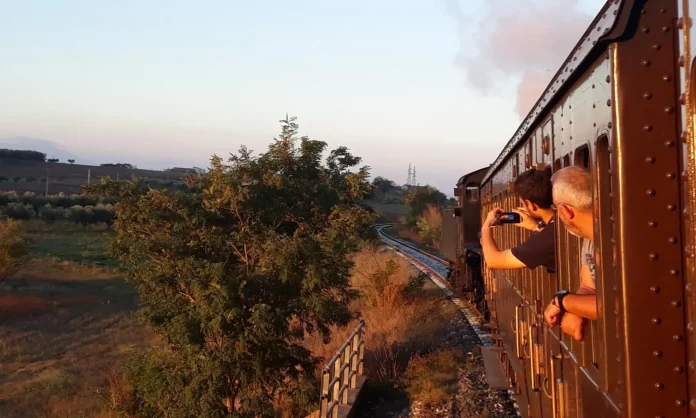by InTrieste
As Europe prepares for a year of cultural milestones, the northern region of Friuli Venezia Giulia is banking on nostalgia-fueled rail travel to attract visitors. The regional government has announced a major expansion of its historic train program in 2025, responding to a surge in demand from municipalities eager to host the vintage locomotives. Out of 52 requests, the region will accommodate 40, creating what officials describe as an ambitious and immersive schedule.
The initiative will play a key role in the cultural programming surrounding GO!2025, the joint European Capital of Culture designation awarded to Nova Gorica, Slovenia, and its Italian twin city, Gorizia. The historic train network, operated in collaboration with Trenitalia and the Ferrovie dello Stato group, is designed to highlight the region’s unique landscapes, history, and gastronomy.
“In partnership with PromoTurismoFVG, we are ensuring that these trains receive maximum visibility,” said Cristina Amirante, Friuli Venezia Giulia’s regional councillor for infrastructure and territory. “These journeys almost always sell out, and we expect strong demand again this year.”
The season will launch on April 6 with the “Treno degli Alpini,” running from Treviso to Gemona del Friuli, a historic town nestled in the foothills of the Julian Alps. The program will culminate on December 8 with the “Treno dei Presepi e dei Mercatini di Natale,” a festive route connecting Gemona del Friuli to Sacile, known for its Christmas markets and nativity scenes.
One of the highlights of the 2025 schedule is the inclusion of 11 train journeys dedicated to Nova Gorica and Gorizia’s tenure as the European Capital of Culture. These trains will originate or arrive in Gorizia and its surrounding areas, offering passengers a historic link between the Italian and Slovenian halves of the twin city.
Beyond their cultural appeal, Amirante sees the vintage trains as a strategic investment in sustainable tourism. “These trains not only promote rail travel as an eco-friendly mobility solution but also showcase the natural, historical, and culinary heritage of Friuli Venezia Giulia,” she said.
The region’s push for rail tourism has already yielded record-breaking numbers. In 2024, the program operated 28 historic train journeys, drawing 11,118 passengers—a 13% increase from 2023, despite running four fewer trains. The average occupancy rate reached an impressive 85%, underscoring the growing enthusiasm for heritage rail experiences.
As Friuli Venezia Giulia gears up for a year in the spotlight, its bet on historic trains reflects a broader trend across Europe: reviving vintage railways not only as a nod to the past but as a sustainable and immersive way to explore the future of travel.





























